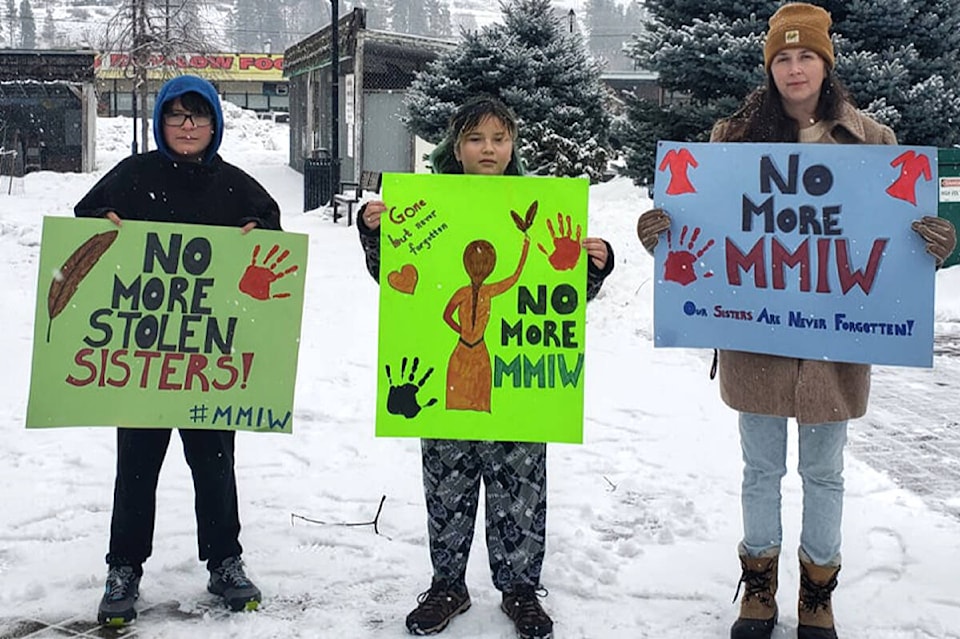Over a dozen women met at Gyro Park Monday, Feb. 14, to honour missing and murdered Indigenous women and girls (MMIWG).
Forming a drumming circle on the brick patio, the women came out to recognize what Boundary All Nations Aboriginal Council (BANAC) President Kerri-Anne Havig called “Canada’s national crisis.”
VIDEO: First Nations, Métis elders lead drum circle at Gyro Park
READ MORE: Boundary aboriginal support worker calls attention to this year’s Moose Hide Campaign
A 2017 fact-sheet released by the federal justice department frames the problem in rather bleak terms. The murder-rate among Indigenous women was six times that among non-Indigenous women in 2014, according to Ottawa’s numbers. The disparity was much wider in some provinces and territories, with murder-rates for Indigenous women 11 and 12 times higher than non-Indigenous women in Saskatchewan and the Yukon between 2001 and 2014.
Havig, whose mother Victoria Runge organized Monday’s demonstration, said Indigenous and Métis communities across North America come out for MMIWG every Valentine’s Day.

“It’s very important to us that we raise awareness. Our women are sacred,” Havig told The Gazette.
For Havig, “the stats are alarming,” but the crisis hits close to home.
Her younger sister lives on B.C.’s Highway 16, the so-called “Highway of Tears” between Prince George and Prince Rupert, where Havig said Indigenous women and girls have gone missing or have been found murdered dating back at least to the 1970s.
Havig said she hoped to see more action from the Government of Canada, which launched a national public inquiry into MMIWG in 2015. The inquiry published its final report, “Reclaiming Power and Place,” in 2019, but Havig said Ottawa needs to do more to protect Indigenous women and girls — a lot more.
Homicide rates have climbed among Indigenous and non-indigenous women between 2016 and 2020, more sharply among the former, according to Statistics Canada.
@ltritsch1
laurie.tritschler@grandforksgazette.ca
Like us on Facebook and follow us on Twitter.
laurie.tritschler@boundarycreektimes.com
Like us on Facebook and follow us on Twitter.
